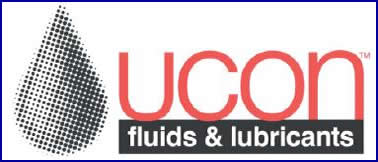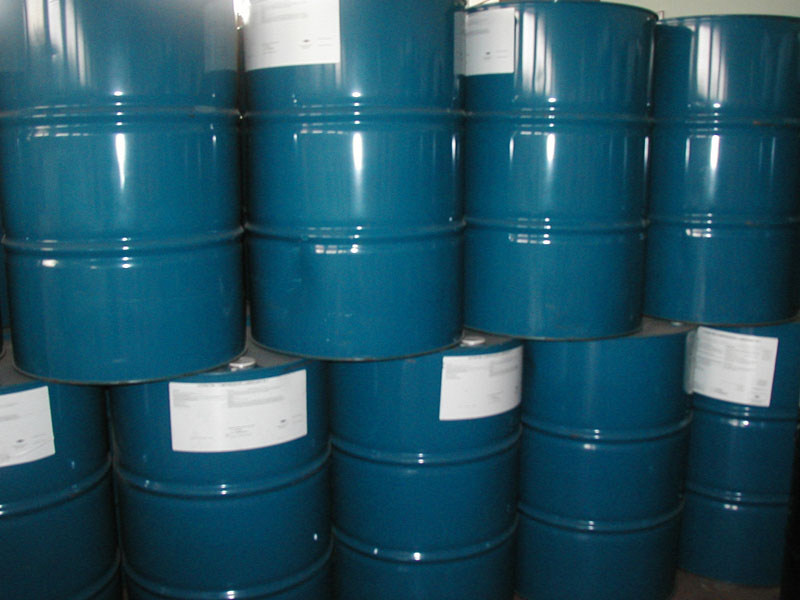| |
UCON Heat Transfer Fluid 500


Introduction
UCONTM Heat Transfer Fluid 500 (HTF 500) is a polyalkylene glycol-based fluid specially formulated for high-temperature, liquid-phase heat transfer in systems requiring bulk fluid temperatures up to 500¡ãF (260¡ãC).
UCON HTF 500 has been used successfully in many high-temperature applications and is recommended.-
Applications
Chemical processing equipment
Laminating and calendering rolls
Dies and molds in the rubber and plastics industries
Drying rolls and ovens
Die-cast zinc and aluminum alloys
(For open bath systems, use UCON Heat Transfer Fluid 50-HB-260-Y3.)
Special Features and Benefits
Long, Trouble-Free Service Life
Features oxidative and thermal stability in vented systems at continuous temperatures up to 500 (260¡ãC).
High Heat Transfer Efficiency
UCON HTF 500 shows less tendency to form coke, lacquers, and resinous deposits than petroleum- based products when used with properly designed, manufactured, and maintained equipment. As a result, the probability of line plugging through deposit buildup is reduced. High heat transfer efficiency is maintained throughout the life of the fluid. (Proper system maintenance is critical for this and all heat transfer fluids.)
Easy to Use with Conventional Equipment
Having a wide liquid range, UCON HTF 500 operates safely and efficiently with properly designed gas-fired, oil-fired, or electrical heat sources. No expensive pressurized equipment is needed at high temperatures. No secondary heating equipment is needed at low temperatures.
Excellent Materials Compatibility
UCON HTF 500 is compatible with carbon steel, aluminum, copper, and other common metals.
Water Soluble
UCON HTF 500 is water-washable with cold or hot water. No expensive solvents and solvent recovery systems are required for cleanup.
High Flash and Fire Points
UCON HTF 500 has a higher flash point at 575¡ãF (302¡ãC), Cleveland Open Cup, and fire point at 600¡ãF (316¡ãC), Cleveland Open Cup, than petroleum fluids and most other synthetic fluids.
Typical Physical Properties
Effective Operating Temperature Range: 0 to 500¡ãF (-18 to 260¡ãC)
Viscosity at 100 ¡ãF (38¡ã C), cSt (SUS) |
62 (288) |
Specific Gravity 68/68¡ãF (20/20¡ãC) |
1.038 |
Coefficient of Expansion
at 68¡ã to 500¡ãF
at 20¡ã to 250¡ãC |
4.4 x 10-4 per ¡ãF
7.9 x 10-4 per ¡ãC |
Pour Point (ASTM D 97), ¡ãF£¨¡ãC£© |
-55£¨-48£© |
Boiling Point |
None nonvolatile liquid |
Flash Point, ¡ãF£¨¡ãC£©
Cleveland Open Cup (ASTM D 92)
Pensky-Martens Closed Cup (ASTM D 93) |
575 (302)
425 (218) |
Fire Point (ASTM D 92), ¡ãF£¨¡ãC£© |
600£¨316£© |
Spontaneous Ignition Temperature, ¡ãF£¨¡ãC£© |
750£¨400£© |
Viscosity Index (ASTM D 2270) |
200 |
Water Solubility |
Nearly complete below 100¨H£¨38¡æ£©
Dispersible above 100¨H£¨38¡æ£© |
Dielectric Constant (25¡æ£¬1000cps£© |
7 |
Specific Volume, ft3/lb£¨dm3/g£© |
0.015£¨0.936£© |
Enthalpy, Btu/lb (J/g) |
100¨H -0.46£»400¨H -0.56 |
£¨38¡æ -1.07£»204¡æ -1.37£© |
Specific Heat, cal/gm ¡æ |
0.44745 + 0.00052812£¨T£© |
(T = Temperature in ¡æ) |
Particulates |
Substantially free |
Appearance |
Transparent red to brown liquid |
Additional Properties
Extrapolated Vapor Pressure at 500¡ãF
|
<0.1/mmHg |
Volumetric Expansion |
5% per 100¡ãF£¨5% per 56 ¡æ£©
above room temperature |
Approximate Standard Heat
of Combustion, Btu/lb (kJ/g) |
Net 11,800 (27.5)
Gross 12,700 (29.6) |
|
|

